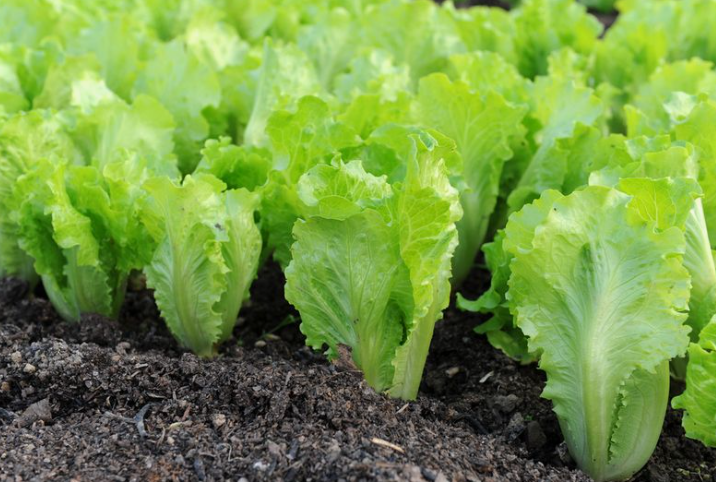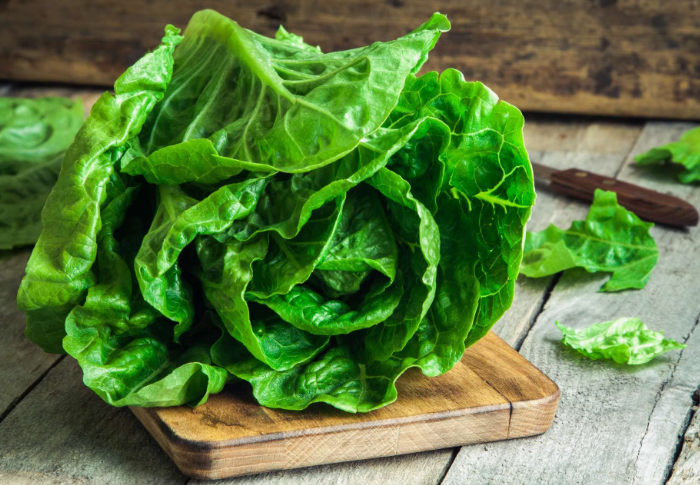Why Is Lettuce Growing Tall? Bolting Explained

We’ve all been there before, the weather is finally improving, the garden is bursting with new growth and all is well, except tall lettuce plants, or why is my lettuce plant growing tall? If you’re growing lettuce for the first time and wondering why is romaine lettuce growing tall, you’re in the right place.
It’s called lettuce bolting, and I’m here to tell you all about it why, and especially when it happens, and what to do with tall lettuce plant. Why is lettuce growing tall? So, if you’re interested, read on.
What Bolting Looks Like in Lettuce?
Lettuce bolting is a perfectly natural process that occurs when the weather gets a bit too warm for our leafy greens. Lettuce is especially quick to go to seed in the right (or rather, wrong) conditions. During bolting, the stem elongates, and the top part of the plant starts forming a flower bud or sending multiple flower stalks, depending on the variety.
Some varieties, like Romaine lettuce growing tall, while other lettuce varieties stay shorter, but you can still tell they’ve bolted. Leaves on bolted lettuce are usually bitter and inedible (not poisonous, though), and you can tell they’ve gone past the point of no return because of the milky white liquid they secrete from their stems.
Factors That Cause Lettuce To Go To Seed
So now that we’ve determined that lettuce bolting is natural, let’s dive into more detail. What’s the combination that signals lettuce that it’s time to terminate their growing cycle? Why is lettuce growing tall? Why is my romaine lettuce growing tall? And, more importantly, can we do anything about it?
1. Sowing times
Timing is crucial in gardening and lettuce is no different. Studies have shown that the absolute worst time to sow lettuce is between May and July. It’s not impossible to grow it, but you’ll have to give it plenty of shade and moisture. This period coincides with temperatures consistently above 60°F (16°C) and increased day length compared to other months.
Lettuce sown during January, March, and August, November performed significantly better in the experiments and was either slow to bolt or didn’t bolt at all.
Sowing lettuce seeds in hot weather doesn’t seem to affect the mature plant as long as the growing temperature is less than 60°F (16°C). This equates to sowing lettuce in August, while the weather is still hot, and allowing it to mature during late autumn.
On the other side of the spectrum, lettuce seeds germinating in cold months, followed by hot spring days most often lead to plants bolting.
2. Consistently high temperatures
If you’re wondering how hot is too hot for lettuce, science has the answer for us yet again:
Lettuce will bolt when exposed to temperatures higher than 68°F (20°C) for more than 8hrs/day, at least 15 days. (Some cultivars will need more than 30 days of high temperatures to bolt, and those slow-bolting varieties are exactly what you should be looking for)
It doesn’t matter if lettuce is done growing, if it’s formed a head or not – once those temperatures spike, lettuce wants to go to seed and there’s nothing you can do to stop it.
3. Increased day length
The summer solstice is more than an astrological event. It tells our plants that days are long and summer is near, so they may as well bloom and spread their seed everywhere!
Spring-grown lettuces, as delicious and irreplaceable as they may be, tend to do very poorly when the days start to get longer. Don’t attempt to grow hearting lettuces in spring, especially if you’ve sown them later than March. They’ll bolt before you get the chance to harvest them. The reverse is true for when days start to get shorter. Lettuces sown in late summer tend to thrive, and you’ll get your second chance at crispy greens before the first frost hits.
4. Lack of water
Drought is another thing that sends lettuce into a bolting frenzy. Especially when combined with rising temperatures and an increase in day length.
But luckily, studies have shown that plenty of water and making sure to keep the soil moist will significantly reduce bolting.
5. Nitrogen excess
Wait, Nitrogen was supposed to be good for foliage growth, wasn’t it? If anything, it was the main culprit for getting more leaves than roots with vegetables like radishes. Well, it seems that too much Nitrogen, while good for lettuce leaf growth, also leads to rapid seed formation, especially when combined with Phosphorous.
In short, it helps lettuce mature faster and we don’t want that, we want our crop to last us as long as possible.
6. Lettuce variety
Not all lettuce varieties are created equal when it comes to bolting. Butterhead varieties are especially slow to bolt and some crispheads like Great Lakes can withstand as long as 50 days of high temperatures before going to seed.
It’s up to you to experiment and do your research before you settle on a lettuce variety that grows consistently well in your area.

How to Postpone Bolting in Lettuce?
Now that you know what’s going on with your lettuce, here’s what you can do differently:
1. Sow lettuce very early or late in the season
This may be easier said than done, since January is so cold that nothing will germinate, and the heat of August may dehydrate any seed you sow in the ground.
The solution? Indoor sowing! At least this is what has worked for me consistently. I live in a temperate climate with short springs and long autumns, so I can start my lettuce seedlings indoors in early March – about 6 to 8 weeks before my last frost date. The seedlings go in the ground while it’s still frosty out, but I protect them with fleece and they can withstand light frosts just fine.
This way, I have until about June to enjoy my leaf lettuce and lovely lettuce hearts. After March, and even April, there’s no point in sowing anymore – bolting is basically guaranteed.
Autumn sowing is the same. I still germinate my lettuce seedlings indoors because of the heat. A greenhouse would be too hot at this point to get healthy seedlings. I transplant my baby lettuce 4 weeks later and enjoy a wonderful autumn supply of greens.
If you’re the lucky owner of a greenhouse, don’t skip autumn sowing – just sow lettuce a little later, once the weather has cooled off a bit.
2. Use shade to your advantage
Lettuce will not only grow in shade, it will thrive in it. Read this article if you’re not convinced. So how can you take advantage of shade during early summers?
- Use shade cloth above your leafy greens, but make sure to leave room for airflow;
- Use 50% reflective screens on your greenhouse. They help cool your plants while also allowing some light through;
- Plant your seedlings in a shadier part of a garden under a tree, by a shed, etc.
Keep in mind, though, that no matter how much shade you will provide, bolting is inevitable above temperatures consistently higher than 68°F (20°C).
3. Water thoroughly and mulch
Watering lettuce is pretty intuitive, you’ll see the leaves perk up when the plant is doing really well. There’s nothing like harvesting crunchy leaves early in the morning or after a light summer rain. However, not all garden soil is created equal – so if you notice your raised beds drying out, here’s what you can do to increase water retention:
- Add more organic matter in spring or autumn. It holds on to moisture like a sponge;
- Mulch the soil surface you can do this with woodchips, straw or compost, depending on your slug population;
- Install a drip irrigation system.
4. Don’t overfertilize
This is easier said than done for us, eager gardeners. Even applying compost every year will already supply plenty of nutrition for our plants, but many of us are tempted to supplement with liquid fertilizers a couple of times during the season.
Lettuce really doesn’t need much to thrive, and the more you give it, the faster you’ll help it grow and go to seed. To neutralize excess nitrogen in your garden soil, you can mix in wood ash, wood chips, sawdust, bonemeal, or oyster shell. Plan your garden in advance so you know not to add too much compost in the area you’ll be growing lettuce.
5. Embrace winter growing
Wouldn’t it be amazing to be able to grow lettuce year-round? Well, if you live in a milder climate and are the lucky owner of a greenhouse or polytunnel you can! Even a sturdy cold frame can work just as well, especially if you insulate the sides with straw bales.
Growing winter lettuce and winter greens actually starts in late summer. Sow lettuce as the weather starts to cool down so that the plants get a chance to mature and form hearts by the time frost hits. After the first frost, because of the low temperature and low light levels, lettuce will grow very slowly and hibernate until spring.
You can harvest one head at a time or pick the outer leaves and allow plants to slowly regenerate.
6. Keep picking those leaves
While you can’t do much about bolting once the flowering stalk has started to shoot up no, breaking it off won’t make your lettuce less bitter, you can certainly slow down the process by regular picking.
Studies show that regular defoliation a.k.a. picking the outer leaves considerably slows bolting down. Picking lettuce leaves is self-explanatory with looseleaf lettuce varieties, but did you know that you can pick leaves off hearting lettuces as well?
You may get smaller hearts at the end of the season, but it’s better than waiting for lettuce heads to mature only to see them go to seed and to waste.
7. Choose slow-bolting varieties
Sometimes lettuce will bolt no matter what you do. Some varieties are just more predisposed to early bolting than others. That’s why it’s important to do your homework and test what works for your area.
In my short season 6B climate, this is what I’ve found grows longest:
- Leaf lettuce: Salad Bowl Red & Green, Lollo Rossa, Lollo Bionda
- Butterhead: Marvel of Four Seasons
- Crisphead: Great Lakes
- Romaine: Little Gem
Know the 5 Reasons Why Your Cauliflower Is Not Forming a Head
What Can You Do If Your Lettuce Has Already Bolted?
Sorry to break this to you, but once you see a flower bud forming on your lettuce, it’s probably time to let it go. why is lettuce growing tall? If it’s already grown really tall, then it’s definitely too bitter to use it for anything.
Some gardeners snip the entire plant to the ground in hopes that it will grow back when the weather cools off. I haven’t done this, and it probably works with looseleaf lettuce, but I find it much easier to just sow a fresh batch of lettuce seedlings.
In my opinion, once lettuce has bolted, there are only two things you can do:
- Throw it in the compost, seeds and all.
The heat of the compost pile will help the seeds decompose so you don’t end up with a bunch of lettuce volunteers next year. - Collect the seeds.
If you’re interested in creating your own seed stash, collecting lettuce seeds is super easy. Make sure that the flowers have dried enough to form a white fluff, similar to dandelion. Snip the flowers and rub them in your fingers on top of a plate.
Ciara Konhaus

I’m Ciara and I’m a gardener and agricultural educator in zone 6b. I’ve farmed and gardened all over the Appalachian mountains and love to empower people with the tools they need to start their own gardens.
